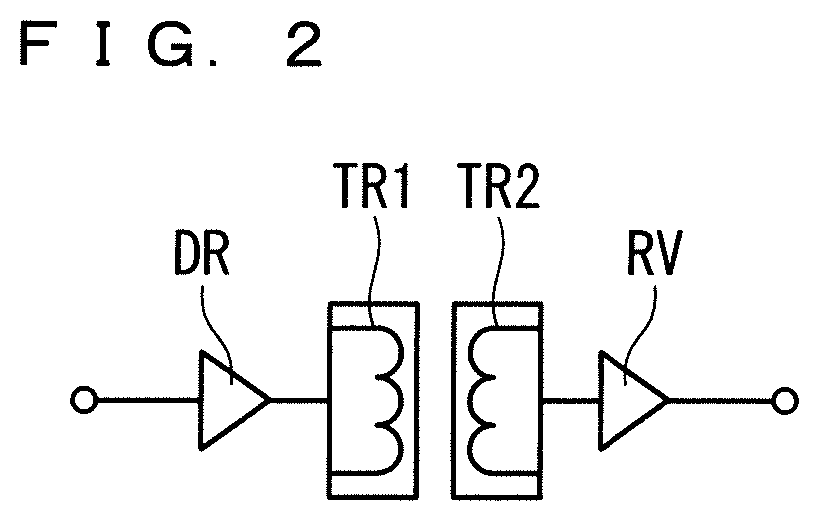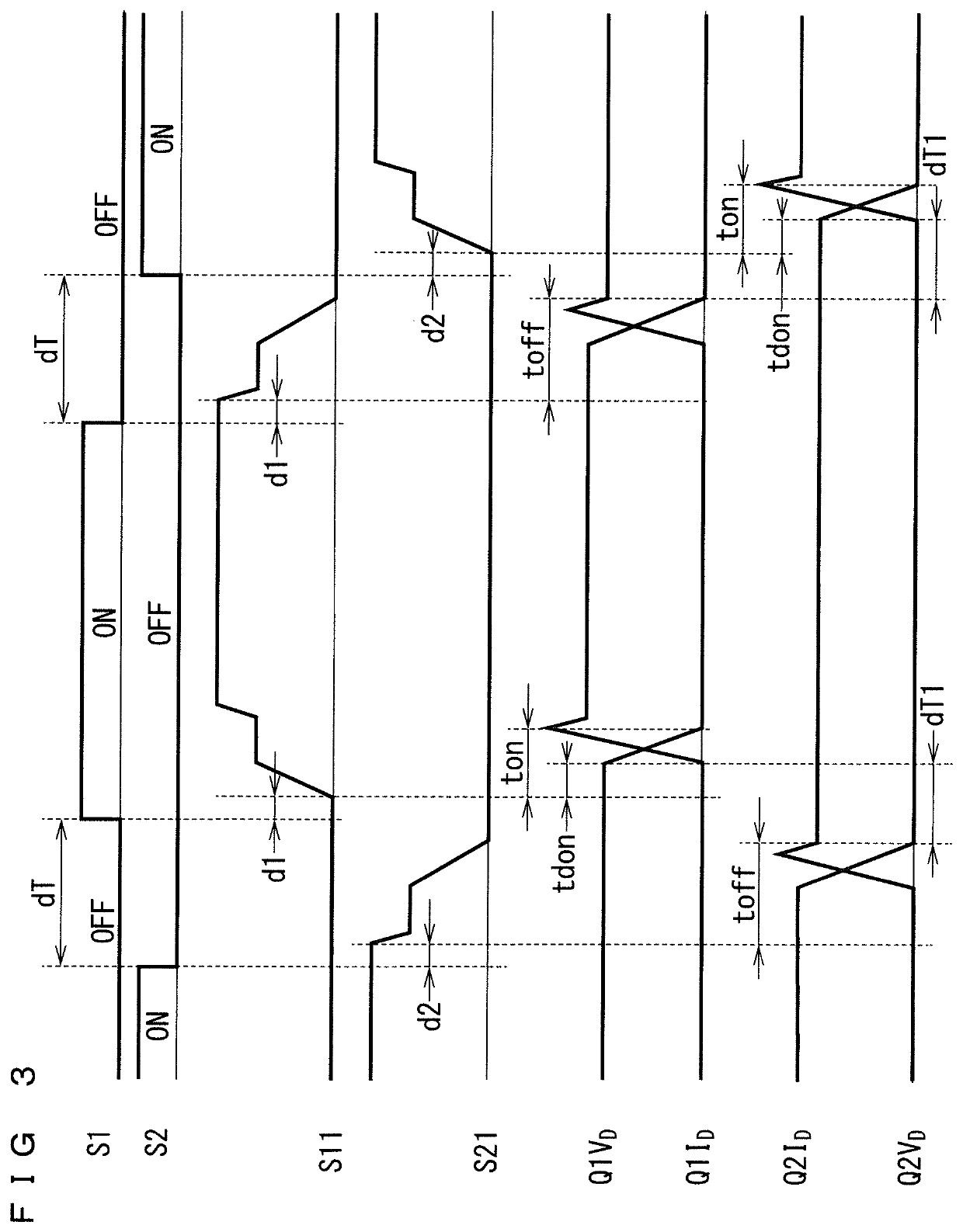Semiconductor device, inverter, and automobile
a technology of inverter and semiconductor, applied in the direction of electric motor control, electronic switching, pulse technique, etc., can solve the problem of excessive through-current to flow into, and achieve the effect of reliably preventing an arm shor
- Summary
- Abstract
- Description
- Claims
- Application Information
AI Technical Summary
Benefits of technology
Problems solved by technology
Method used
Image
Examples
first embodiment
[0084]According to the prior art, when a resistance value of each of the gate resistors R1 and R2 is changed by the soft shut-off function of the protection circuit to change the turn-on and turn-off times of the corresponding one of the transistors Q1 and Q2, a dead time to be added to each of the gate on-off command signals S1 and S2 needs to be adjusted each time. In contrast, the half-bridge circuit 100 of the first embodiment allows the actual dead time PdT to extend or shorten in accordance with the increase and decrease of the turn-on and turn-off times of each of the transistors Q1 and Q2, so that a dead time to be added to each of the gate on-off command signals S1 and S2 does not need to be adjusted.
[0085]This is because there are provided the upper status-detection circuit STH and the lower status-detection circuit STL to determine whether the corresponding transistors Q1 and Q2 are in turn-off operation on the basis of gate voltages of the respective transistors Q1 and Q...
fourth embodiment
[0118]FIG. 9 is a conceptual diagram illustrating a configuration of a vehicle 400 in which a motor is controlled using the three-phase inverter 300 incorporating a dead-time generation circuit.
[0119]An electric vehicle such as a hybrid vehicle, a plug-in hybrid vehicle, an electric vehicle, a fuel cell vehicle, or the like, as well as an automobile driven by an internal combustion engine, provided with a regenerative motor such as a starter-generator, includes a running motor and an electric-power regenerative motor. FIG. 9 illustrates a configuration using the three-phase inverter 300 incorporating a dead-time generation circuit for driving control of a three-phase motor MT of each of them.
[0120]While a hybrid vehicle, a plug-in hybrid vehicle, an electric vehicle, a fuel cell vehicle, and an automobile provided with a starter-generator or the like, each include a motor with an output of 1 kW or more, the motor has a large load fluctuation and alternately repeats power running an...
PUM
 Login to View More
Login to View More Abstract
Description
Claims
Application Information
 Login to View More
Login to View More - R&D
- Intellectual Property
- Life Sciences
- Materials
- Tech Scout
- Unparalleled Data Quality
- Higher Quality Content
- 60% Fewer Hallucinations
Browse by: Latest US Patents, China's latest patents, Technical Efficacy Thesaurus, Application Domain, Technology Topic, Popular Technical Reports.
© 2025 PatSnap. All rights reserved.Legal|Privacy policy|Modern Slavery Act Transparency Statement|Sitemap|About US| Contact US: help@patsnap.com



